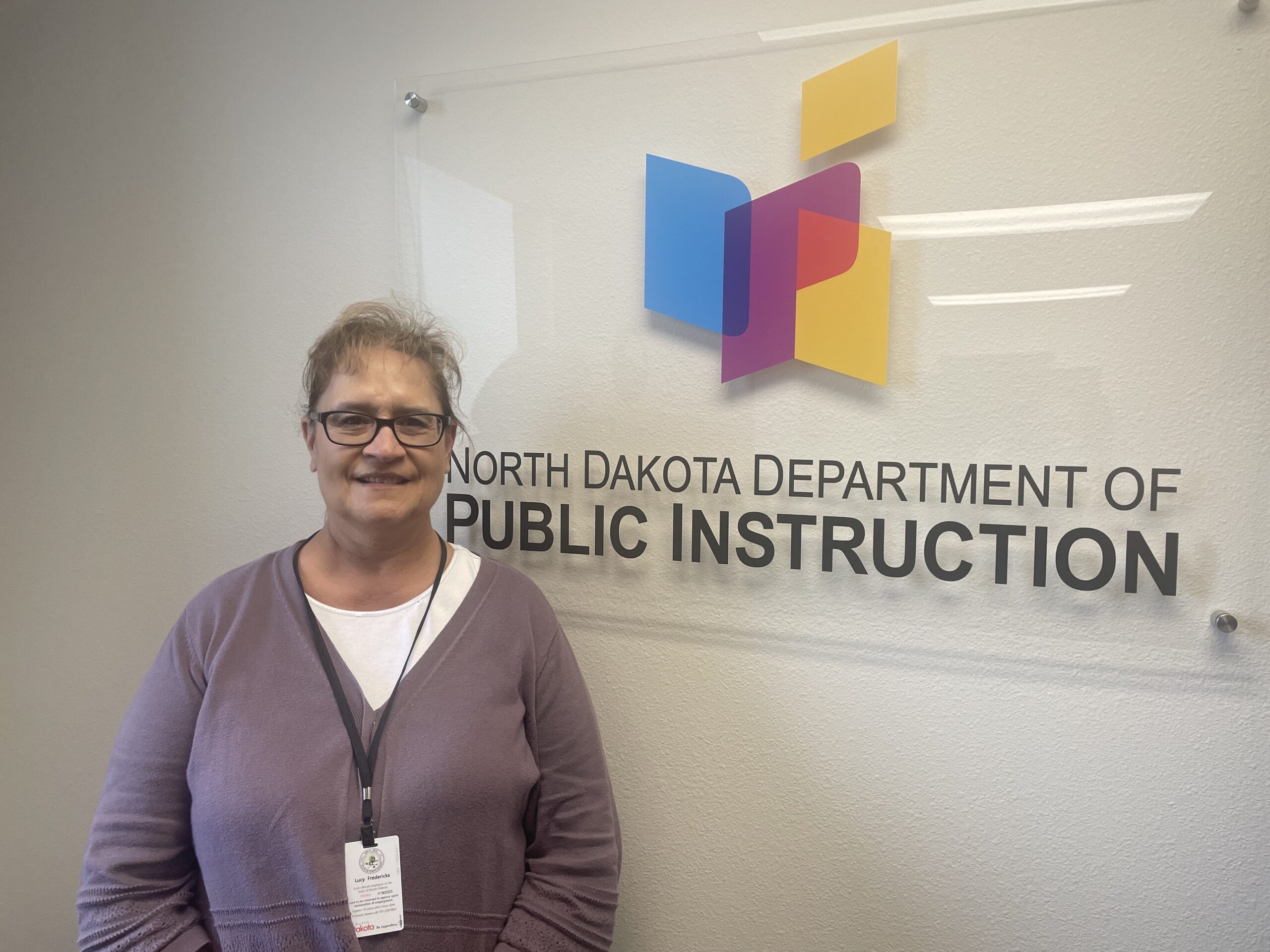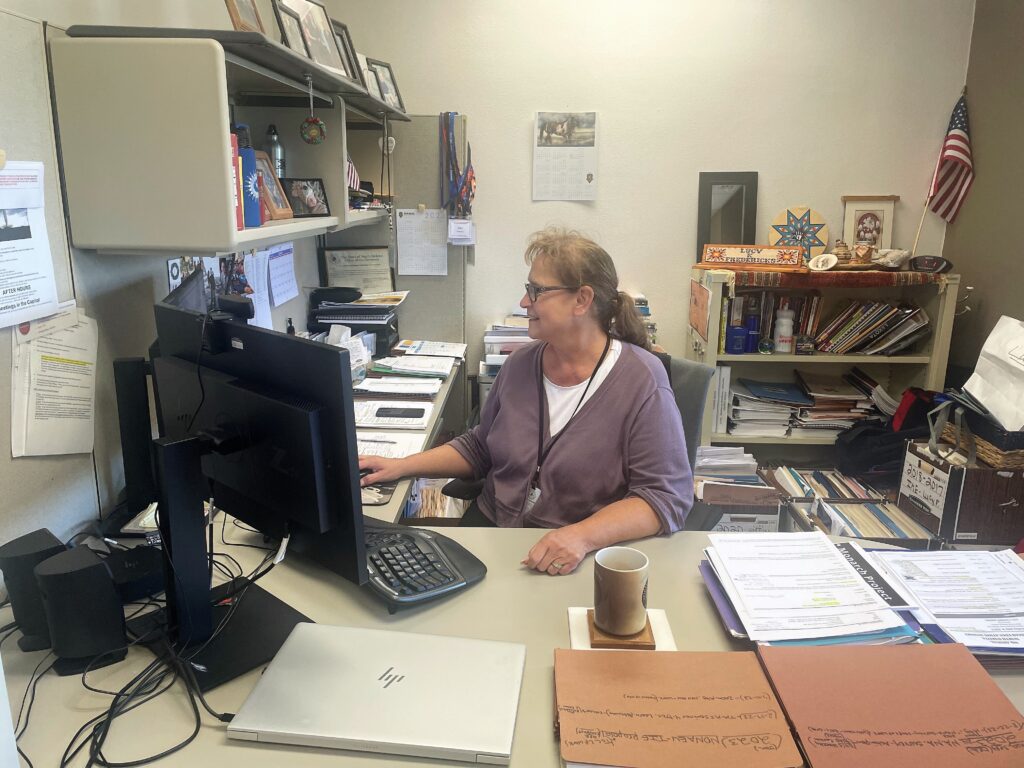News Based on facts, either observed and verified directly by the reporter, or reported and verified from knowledgeable sources.
State educator serves North Dakota’s largest minority student population
 Lucy Fredericks, director of Indian and Multicultural Education for North Dakota, collaborates with different offices to meet North Dakota's Native students' needs. Photo by Adrianna Adame
Lucy Fredericks, director of Indian and Multicultural Education for North Dakota, collaborates with different offices to meet North Dakota's Native students' needs. Photo by Adrianna Adame
American Indians comprise 10 percent of grades K-12
At her desk on the 11th floor of the state Capitol, Lucy Fredericks thumbs through files, preparing for her next meeting with state educators. She hopes to improve student outcomes in her post as director of Indian and Multicultural Education for North Dakota.
Acting as a liaison between the state and the tribes, she said she is ready to partner with schools for their own unique needs. “Our work is important in the fact that we provide funding to the schools,” Fredericks told Buffalo’s Fire.
“Each office plays a part and a role in education. Just being able to provide support and technical assistance to all the schools in North Dakota is what we do.”
Her agency is housed within the state Department of Public Instruction, which oversees K-12 education across North Dakota. It supports the federal Bureau of Indian Education, or BIE, and tribal schools.
According to Insights North Dakota, 10% of the state’s enrolled student population was recorded as American Indian during the 2022-23 school year. The numbers make Indigenous students the largest minority in the state.
Fredericks not only coordinates with schools in tribal jurisdictions but also with those in very small rural districts and their large urban counterparts. Her goal is to meet Native students’ needs anywhere through daily outreach and planning.
Often, she and her team travel to visit different schools to network and attend meetings with other agencies within the department. Fredericks works to collaborate with the different offices to build partnerships statewide, she said.

When she first began working in education in 1990, Fredericks started off as a teacher’s aide at the Twin Buttes Elementary School. The K-8 public elementary and middle school near Halliday, N.D., had 50 to 60 students, depending on the year.
She worked in different classrooms with the all-Native student population from the surrounding Mandan, Hidatsa and Arikara Nation. She kept the job while earning her associate, bachelor’s and master’s degrees in education through the University of North Dakota.
As that stint on the Fort Berthold Indian Reservation came to an end, she thought it would be good to get back into the community where she is enrolled. So, she applied for the assistant principal position at Standing Rock Elementary School in Fort Yates, N.D.
After one year as the assistant principal at the grant-supported nonprofit community school, she accepted a promotion to principal, remaining for the next six years. When the position of director of Indian and Multicultural Education came back after being defunded for seven years, Fredericks applied.
Since 2012, she’s been busy managing each of the initiatives and programs that the department runs. One of her proudest achievements is the Indian Education Summit, a two-day conference for students and educators to come together and share ideas.
For years, North Dakota didn’t have an Indian Education Summit. “All the surrounding states did, like South Dakota, Wyoming, Montana – they all had a statewide Indian Education Summit,” said Fredericks. “At that time, I worked closely with the North Dakota Indian Affairs Commission.”
She collaborated with Scott Davis, then executive director of the North Dakota Indian Affairs Commission, to co-sponsor the first North Dakota Indian Education Summit. In July 2023, the Department of Public Instruction hosted its 9th annual summit at the state capitol.
After nearly 12 years at the department, Fredericks said she remains passionate about working with schools and staff. “I enjoy working with all the schools,” she said. “I love working with the tribal nations within the state and working with the students.”
Dateline:
BISMARCK, N.D.
